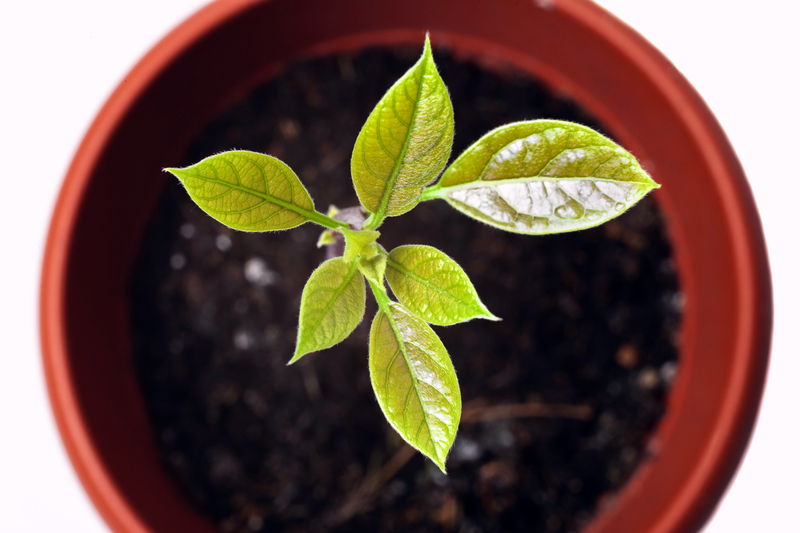Crafting an Engaging Garden for Young Explorers
Posted on 01/06/2025
Crafting an Engaging Garden for Young Explorers: A Complete Guide
Are you looking for creative ways to spark your child's imagination and nurture a love for nature? Designing an engaging garden for young explorers is a rewarding endeavor that blends play, education, and environmental stewardship. This article delves deep into how to create a stimulating outdoor space for children filled with opportunities for adventure, hands-on learning, and nature discovery.

Why Design a Garden for Children?
Modern children spend increasing hours indoors. Establishing a vibrant garden not only improves kids' physical and mental health but also fosters an early appreciation for the natural world. Child-centered gardens can:
- Encourage curiosity and creativity
- Promote exercise, coordination, and gross motor skills
- Develop responsibility and patience through gardening tasks
- Instill environmental awareness and sustainable habits
- Offer opportunities for family bonding and learning
Creating an engaging garden for young explorers starts with thoughtful design and the right features tailored to your child's age, interests, and abilities. Below, discover comprehensive strategies for crafting a captivating garden where children can thrive.
Key Principles in Crafting a Kid-Friendly Garden
1. Safety First in Children's Gardens
Before you introduce playful elements or plant varieties, ensure the garden is a safe environment. Here are essential safety tips:
- Non-toxic plants: Carefully select plants that are not harmful even if touched or tasted by young children.
- Safe surfaces: Install soft grassy areas or mulch to cushion falls and avoid sharp-edged stones.
- Chemical-free gardening: Use organic methods--free from pesticides, herbicides, or synthetic fertilizers.
- Garden boundaries: Clearly define garden edges and supervise water features or raised beds.
2. Accessibility and Scale for Little Explorers
Design the garden at a child's scale. Kid-sized paths, benches, and planters encourage independent exploration and make gardening tasks enjoyable. Consider:
- Raised beds at child height for easy access
- Stepping stones or wood slices forming whimsical paths
- Light but sturdy tools tailored to smaller hands
3. Inspiring All Five Senses
An engaging children's garden should be more than just visual--it should stimulate all five senses:
- Touch: Include soft moss, fuzzy lamb's ear, sand, or smooth pebbles.
- Sight: Plant vibrant flowers, leaves, and fun garden decorations.
- Sound: Add wind chimes, rustling grasses, and water features.
- Smell: Grow aromatic herbs like mint, basil, and lemon balm.
- Taste: Incorporate edibles--strawberries, snap peas, cherry tomatoes.
Ideas and Features for an Adventurous Children's Garden
1. Living Tunnels and Hideaways
Encourage imaginative games by constructing plant-based tunnels or forts. Fast-growing climbers such as beans, sweet peas, or gourds can cover trellises, arches, or tipis, providing secret spaces to spark pretend play.
2. Digging and Planting Spaces
Dedicate a child's garden plot for little hands to dig, plant, and experiment. Fill it with easy-to-grow seeds that sprout quickly, like radishes, sunflowers, or nasturtiums, so kids see results in days or weeks.
3. Wildlife and Bug Hotels
Foster a sense of stewardship for living things by attracting pollinators and beneficial insects. A bug hotel fashioned from wood, twigs, and stones offers shelter, while butterfly-friendly flowers and bird feeders bring nature close.
4. Discovery and Sensory Paths
- Create winding trails through tall grasses or fragrant flowerbeds
- Add stepping stones of varied textures for tactile exploration
- Hide "nature treasures" along the path to prompt scavenger hunts
5. Water Exploration Zones
Introduce water play with shallow birdbaths, mini fountains, splash pads, or mud kitchens. These features stimulate sensory play, fine motor skills, and support activities like leaf boat racing or water painting on stones.
6. Art, Music & Creative Corners
Set up a shaded nook with outdoor art supplies, nature-inspired crafts, or weatherproof musical instruments (like xylophones or drum logs) to foster creativity and expression in your garden for young explorers.
7. Edible Gardens and Snack Trails
- Plant berry bushes or fruit trees along garden trails
- Design "pizza beds" with tomatoes, basil, and oregano
- Mix in rainbow carrot patches or cherry tomato tunnels for healthy snacking
Choose the Best Plants for a Child-Friendly Garden
For a playful and engaging kid's garden, plant selection matters just as much as the layout. Opt for non-toxic, robust, and easy-to-grow varieties. Here are some favorites:
- Sunflowers: Fast-growing, dramatic height, and great for measuring contests
- Sensory plants: Lamb's ear, snapdragons, mint, thyme, calendula
- Edible treats: Cherry tomatoes, radishes, strawberries, peas, cucumbers
- Butterfly magnets: Milkweed, coneflower, marigold, lavender
- Herbs for scent: Lemon balm, basil, parsley, rosemary
Remember to avoid thorny, spiky, or potentially toxic plants like foxglove, oleander, daffodils, or mushrooms.
Engaging Activities for Young Garden Explorers
A truly engaging garden for kids is as much about active participation as it is about design. Schedule these hands-on activities to foster curiosity and joy:
Daily and Seasonal Gardening Tasks
- Watering with mini cans or spray bottles
- Planting and labeling seeds
- Weeding and mulching small plots
- Harvesting crops and tasting garden snacks
- Composing nature journals to sketch or note discoveries
Nature Discovery Games
- Bug hunts with magnifiers
- Leaf or flower color matching
- Counting and identifying birds or insects
- Mud art and stone painting
- Seasonal scavenger hunts
Creative & Sensory Exploration
- Mud pie or fairy garden creation
- Nature weaving with grass, twigs and petals
- Wind chime or sun-catcher craft from natural materials
- Storytelling circles or puppet shows in hideaways
Tips for Parents: Fostering Independence and Wonder
- Let kids lead: Empower your children to choose plants, mark paths, or design their own plots.
- Celebrate mistakes: Some seeds may not sprout, and that's okay! Treat every setback as an opportunity to learn.
- Encourage open-ended play: Nature prompts creativity--offer sticks, stones, and leaves instead of plastic toys.
- Model curiosity: Ask questions, investigate bugs, and share in discoveries.
Year-Round Engagement in the Children's Garden
Crafting an adventurous garden for kids is a year-round endeavor. With a little planning, your garden can evolve with the seasons:
- Spring: Sow seeds, puddle-jump, and search for new shoots.
- Summer: Harvest snacks, catch butterflies, build forts from sunflowers.
- Autumn: Rake leaves, collect acorns, and press flowers or foliage.
- Winter: Build bird feeders, decorate with natural ornaments, or hunt for animal tracks in snow or mud.
Making the Most of Small Spaces
Don't have a large backyard? You can still design an engaging micro-garden for children on balconies, patios, or window sills. Try:
- Pots of herbs and strawberries
- Vertical gardens with lightweight planters
- Hanging baskets for trailing flowers
- Mini wormery or compost bins to study decomposers
Sustainable Gardening: Teaching Respect for Nature
An engaging garden for young explorers isn't just about fun--it's a wonderful opportunity to teach eco-friendly habits:
- Composting food scraps and garden waste
- Rainwater collection in barrels for garden watering
- Encouraging native plants to support local pollinators
- Reusing materials for crafts and construction
- Learning about lifecycles--from seed to sprout to bloom

Conclusion: A Magical World for Young Gardeners
In summary, crafting an engaging garden for young explorers is more than landscaping--it's the creation of a miniature world where children can play, learn, and grow alongside nature. From sensory-rich plantings to interactive learning stations, every element should invite curiosity, discovery, and unstructured joy.
Start small, involve your children in every step, and watch as your garden flourishes into a hub of creativity, adventure, and learning!
Frequently Asked Questions
1. What are the best plants for a children's sensory garden?
- Soft: Lamb's ear, moss, ornamental grasses
- Smell: Lavender, mint, lemon balm
- Taste: Strawberries, cherry tomatoes, snap peas
2. How do I keep a garden safe for young children?
Avoid thorny, toxic, or allergenic plants, use organic gardening practices, and create soft surfaces. Always supervise water features.
3. What activities can I do with preschoolers in the garden?
- Dirt digging and planting
- Nature art and scavenger hunts
- Story time in a garden nook
- Counting seeds, petals, or bugs
With these tips, you'll be on your way to crafting a magical, stimulating, and safe garden for young explorers--one where every day brings new wonders under the sun.


